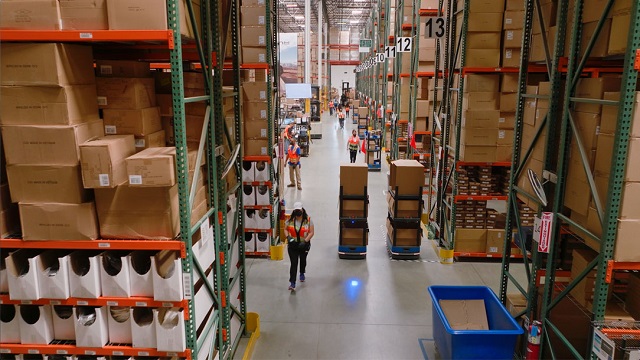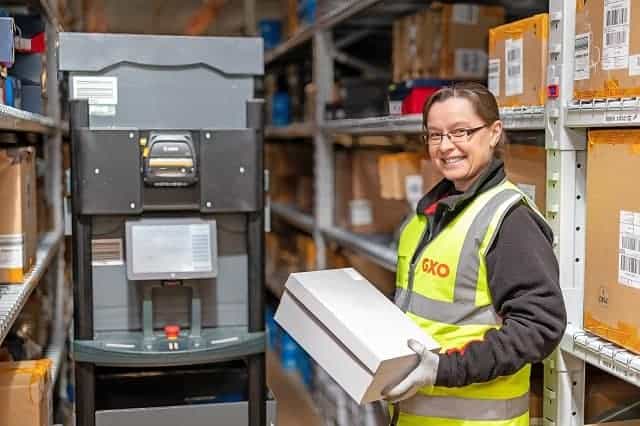When it comes to running a successful, efficient and cost-effective warehouse, two very important factors come into play — strong leadership and constant improvement of warehouse operations. Introducing a strong warehouse manager who has an understanding of both present operational procedures and future technological trends, allows the company to comfortably keep up with current demands while keeping an eye on changes that may help to further streamline processes. This big-picture thinking can make the difference between a business simply surviving in the short-term or a business thriving in the long-term. 
Implementing this operational plan can look like a number of things depending on the size, location and resources of your unique business. But, no matter what your business does, the one thing that you should have in common with your successful competitors is that you have a warehouse manager who has a keen understanding of training, scheduling, safety measures and forthcoming technologies, all of which will when considered scrupulously, give you a swifter return on your investment.
How do you manage warehouse operations?
Effective warehouse operations management can increase operational efficiency and reduce costs while boosting customer satisfaction. The primary goal of warehouse operations is the efficient utilization of space, labor and equipment while meeting customers’ expectations. It’s a straightforward objective, but the path to achieving it is anything but, requiring complex planning and the ability to adapt to ongoing change.
A strategic warehouse operations plan that defines your warehouse objectives and the procedures, workflows and policies that apply to each warehouse function (dock operations, receiving, storage, order picking, packing, shipping, returns, etc.) provides a foundation for successful warehouse operations. It should also include diagrams such as floor plans and documentation of resources such as space, labor and equipment and how each warehouse function utilizes what portion of each of these assets. Princeton University’s AAUPWiki describes five essential steps to follow for developing a plan for each warehouse function:
- Set goals for your warehouse by defining the function you want to implement or the objective you want to achieve.
- Describe the process for meeting the objective.
- Identify the equipment necessary for meeting the objective.
- Evaluate the space requirements for the function.
- Estimate and describe additional support needs, such as staffing, capital investments or software.
There are many unique variables and requirements to consider. “The SCOR model and companies such as GS1 have blueprints of key processes using barcoding and radio frequency controls, which offer standard ways of reading and recording data, but the physical materials handling logistics and ways of doing things in each warehouse are somewhat unique to each business,” explains Mal Walker in an article on Logistics Bureau. “This is driven by factors including magnitude of the warehouse operation, storage capacity, temperature, order profiles, legislative requirements, company culture, and volume of goods moving through the facility.” Warehouse operations managers must be able to weigh the many influencing variables to develop the most cost-effective way to utilize the warehouse’s resources and assets and the most efficient workflows.
Warehouse operating conditions are rarely static. The constantly evolving nature of the supply chain means that warehouse operations must be highly adaptable to change. Having a carefully planned strategy for each warehouse function, executing those strategies well, and maintaining the flexibility needed to adapt to continuous change are the hallmarks of effective warehouse operations management.
How do you improve warehouse performance?
Warehouse operations managers can improve warehouse performance by monitoring key performance indicators (KPIs) and leveraging supply chain analytics solutions to better forecast demand and predict market shifts. Gaining better supply chain visibility enables warehouse managers to take prompt action to mitigate potential risks, such as activating secondary suppliers when a spike in demand or a supply shortage is likely.
Gaining a bird’s-eye view of your warehouse operations and leveraging sophisticated analytics solutions support continuous improvement, but it’s the warehouse strategies you implement in response to that data that really make a difference in warehouse performance. For example, if a warehouse is struggling to reach its fulfillment goals, warehouse operations managers may consider strategies such as offering workplace incentives to increase productivity or investing in a warehouse automation solution, such as collaborative mobile robots, to boost efficiency. For instance, one fashion 3PL tripled its pick rates, speeding up processing from 25 UPH to 85 UPH for in-aisle picking within three months after implementing AMRs. The company, ACT Fulfillment, also dramatically increased order accuracy by reducing mispicks by 90% and achieved a return on investment in five months.
Warehouse operations managers must consider the available options for achieving business objectives within the context of the facility’s unique limitations and other influencing factors. For instance, if analytics reports reveal a high error rate for its sorting processes, yet available space is scarce, installing a conveyor system isn’t the most viable option. Mobile Sort stations, on the other hand, are a strategic investment that can help boost sorting rates and improve accuracy. Because they can be wheeled in to support sorting during busy periods or seasons and then wheeled back out, mobile sorting stations are a practical solution that won’t sacrifice valuable floor space.
Warehouse operations process and best practices
While the specific steps to effective warehouse operations management and performance improvement vary depending on the unique needs of a warehouse operation, there are some tried-and-true best practices that support an efficient, streamlined operation. We’ll discuss a few of these proven best practices below:
- Invest in a competent and experienced warehouse manager
- Ensure that everyone is clear on your current numbers and future goals
- For optimized warehouse operations, think vertically
- Check in with your workers
- Invest in technologies that support the growth of your business
Keep reading to learn more about how you can better manage and improve the operational procedures of your warehouse.
1. Invest in a competent and experienced warehouse manager
This can mean many things, depending on the needs of your unique business. Perhaps this person has five years of experience managing warehouses, or perhaps they have 30. But the one thing that they should all have in common is specialized expertise in the equipment and procedures that make your warehouse run efficiently. This person knows the ins and outs of the space, every tool, the strengths of every worker that they hire onto the team. And, of course, if (and when, in many cases) something goes awry, they know how to fix the problem with your business incurring as little damage as possible.
Having said that, the aforementioned is simply half of what constitutes a great warehouse manager. The other half has to do with this person’s knowledge and instinct on what will help your business run more effectively in the future. They will know what technologies are projected to give your business a swifter ROI in, say, five years so that you can begin planning for the investment now. It may take some trial and error to find a warehouse manager of this caliber, but the hard work will ultimately give your business power in the form of stability.
2. Ensure that everyone is clear on your current numbers and future goals
This sentiment doesn’t just begin at you and stop at your warehouse manager; every employee, from the CEO to the workers on the floor must understand what your business needs to do in order to survive. Put your daily, monthly, and even annual factory output on display for your entire team to see. This small gesture does a whole lot of good for everyone involved – it gives higher-ups clarity on the needs of customers and suppliers, and it gives workers who are usually not part of strategy a keener sense of what they must deliver in terms of speed and presence.
On the other hand, it’s also key to give your employees, specifically the management team in your warehouse, a sense of how you expect your business to grow into the future. Even if they don’t have a role in planning, this knowledge will: 1) prepare them for changes so that they aren’t caught off-guard and 2) give them the ability to collaborate. These workers might have previous experience or insider knowledge that might not be so obvious on the surface.
3. For optimized warehouse operations, think vertically
If this is your first advance into the world of warehouses, then you might be stumped as to how you can best utilize your space. Generally speaking, the industry standard is to organize your inventory from the bottom up. This procedure gives you more space, but it also creates more organic paths for either movement or the temporary placement of machinery and can have a positive impact on order picking accuracy and productivity.
4. Check in with your workers
Again, this means all of your workers, from your corporate right-hands to the folks out on the floor. We all know that there’s nothing that kills morale faster than a seemingly “phantom” managerial department, so always do your best to ensure that both you and your warehouse manager are meeting the needs of your employees.
This can take place in the form of structured meetings, or even impromptu chats, but no matter how casual the encounters may be, you will absolutely walk away from your conversations learning valuable information about your inventory — in ways that you may not glean on a day-to-day basis.
5. Invest in technologies that support the growth of your business
Do you want your business to “keep busy” in the short-term or flourish in the long-term? If you are planning on passing along the fruits of your entrepreneurial labors to generations to come, then it’s key that you fight to maintain consistency today, while keeping your eye on tomorrow’s most cutting-edge technologies.
Make your warehouse manager fully aware of your goals so that they can better prepare you for the potential costs and shifts that you might encounter in your business. These investments might feel like blows now, but if they are well planned, you and your employees will be gifted with long-lasting security, growth and success that will allow you to innovate well into the future.


